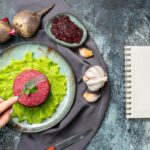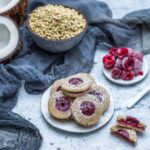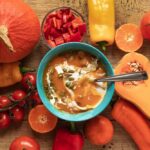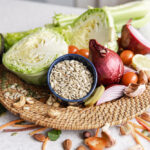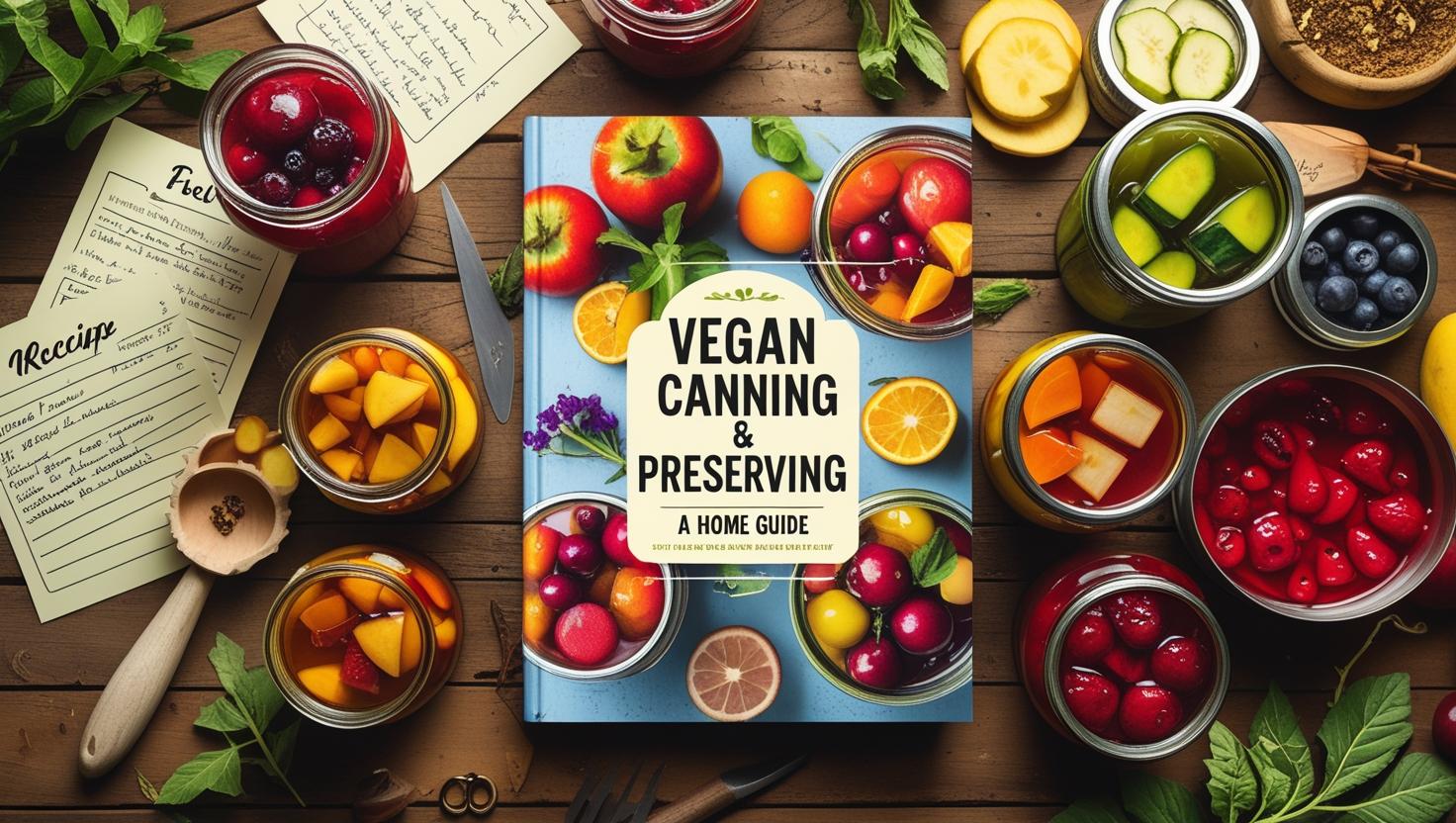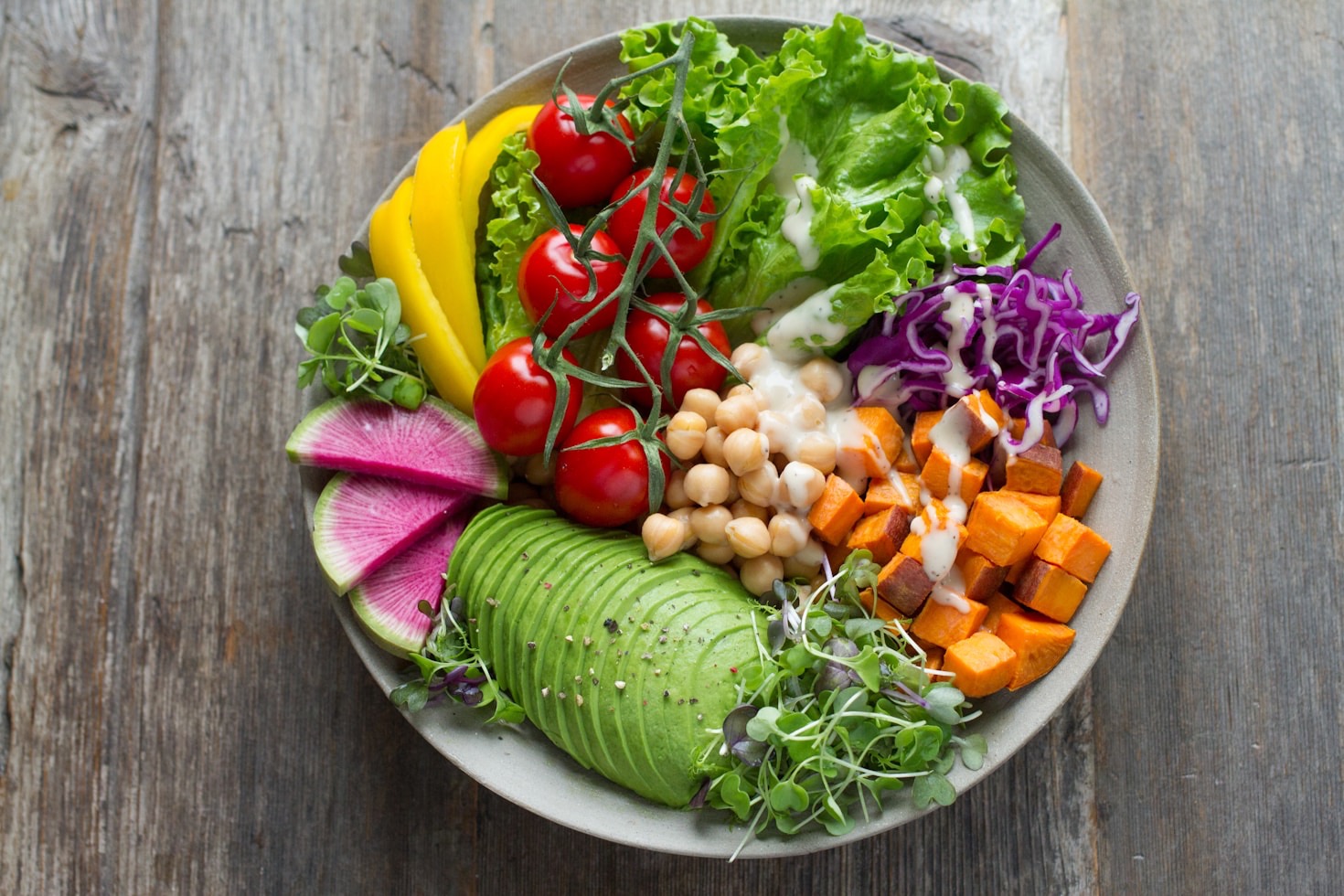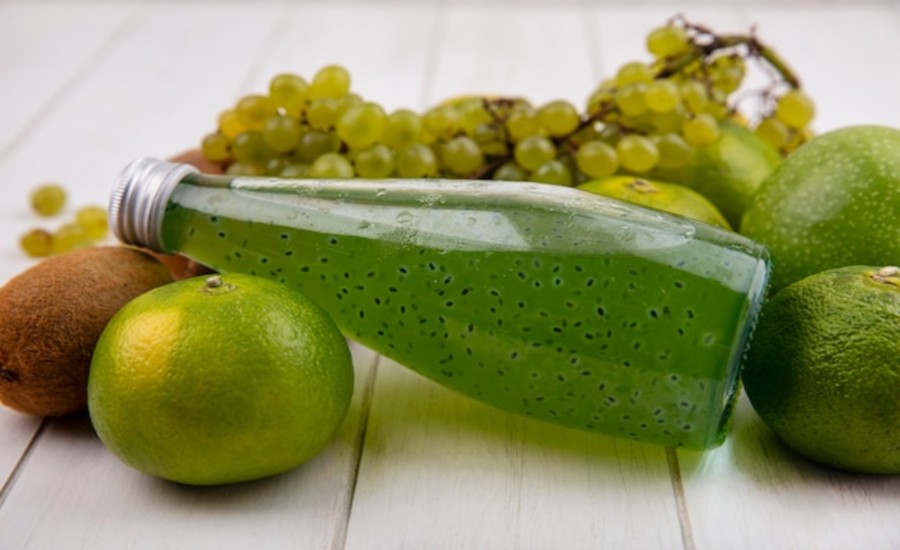Before refrigeration and global shipping, preserving the harvest was essential for survival. Today, the art of food preservation remains deeply relevant, offering a way to capture the peak flavour of seasonal abundance, reduce food waste, save money, ensure ingredient quality, and connect with traditional practices. For vegans, home preserving provides complete control, ensuring no animal products are used. This guide explores the diverse world of vegan canning and preserving tips, covering essential methods like canning, pickling (including Indian achar), drying (like traditional sun-drying in Rajasthan), and fermenting. We’ll examine these techniques through the lenses of nutrition, ethics, environment, and practical application, empowering you to safely and deliciously extend the life of your plant-based bounty.
Vegan Canning & Preserving Tips for Seasonal Vegan Food
LENS 1: Nutritional Analysis (Preserving Nutrients)

Different preservation methods impact the nutritional content of vegan foods in various ways. Understanding these changes helps make informed choices.
- Vitamin Variability:
- Heat-Sensitive Vitamins (like Vitamin C, some B Vitamins): Reduced by high heat used in canning. However, canned foods often use produce at peak ripeness, which starts with higher nutrient levels. Minimal heating methods (like quick pickling or light blanching before freezing) or no-heat methods (drying, fermentation) tend to retain these better.
- Fat-Soluble Vitamins (A, D, E, K): Generally more stable during heat processing like canning. Using oil in pickles can aid absorption of Vitamin A (from carrots, mangoes) and K (from greens).
- Mineral Stability: Minerals are generally stable and well-retained across most preservation methods (canning, drying, freezing, pickling).
- Fiber Focus: Fiber content remains largely intact through most methods, contributing to the health benefits of preserved fruits, vegetables, and legumes.
- Sugar & Sodium: Homemade preserving allows control over added sugar (in jams, jellies, murabba – like Amla murabba) and salt (in pickles/achar). Opting for lower sugar recipes or using salt primarily for preservation safety rather than excessive flavouring leads to healthier outcomes. Traditional Indian achars often use significant salt and oil for preservation – consume these flavourful condiments mindfully.
- Fermentation’s Edge: Lacto-fermentation (used in some pickles like Kanji made from carrots/beets, or sauerkraut/kimchi adaptations) can actually enhance nutritional value. Beneficial bacteria produce B vitamins, improve mineral bioavailability, and create probiotics that support gut health.
- Peak Season Advantage: Preserving seasonal produce (like summer mangoes or winter amla/carrots in Rajasthan) captures fruits and vegetables when their nutrient content is often at its highest. When preserving, how do you balance capturing flavour with retaining nutrients (e.g., choosing lower sugar jam, using minimal heat)?
Read more: Best Vegan Fermented Foods: Boost Gut Health & Immunity Benefits
Nutritional Deep Dive: Fermentation – Boosting Nutrients & Gut Health
Lacto-fermentation uses naturally present lactic acid bacteria (LAB). These bacteria consume sugars in vegetables and produce lactic acid, creating an acidic environment that prevents spoilage organisms. During this process, LAB can:
- Synthesize B Vitamins: Including folate and sometimes even trace amounts of B12 (though not considered a reliable sole source).
- Increase Mineral Bioavailability: The acidic environment can help break down phytates, compounds in plants that can bind minerals, making minerals like iron and zinc more easily absorbed.
- Produce Probiotics: Live LAB populate the gut, contributing to a healthy microbiome, which impacts digestion, immunity, and even mood.
- Predigest Food: Makes vegetables easier to digest for some people.
Voice of Experience (Food Scientist): “While some vitamin loss is inevitable with heat processing like canning, preserving food at its peak freshness often means you’re starting with higher nutrient levels. Methods like fermentation can uniquely enhance nutritional value by creating probiotics and increasing bioavailability of certain minerals. Safe techniques are key to balancing preservation and nutrition.” – Dr. Leela Subramanian, Food Preservation Researcher
LENS 2: Ethical Framework (Conscious Preservation)

Vegan canning and preserving are deeply intertwined with ethical considerations that go beyond avoiding animal products.
- Valuing Food & Reducing Waste: At its core, preservation is an act of valuing food and the resources (land, water, labour) used to produce it. Reducing food waste is a significant ethical act, countering the injustice of waste amidst scarcity. Preserving seasonal gluts prevents perfectly good food from spoiling.
- Self-Sufficiency & Food Security: Home preservation fosters self-reliance and contributes to household food security, especially important in regions where access to diverse foods might fluctuate seasonally or economically. This is a traditional resilience strategy in many cultures, including Rajasthan.
- Preserving Heritage & Skills: Many preservation techniques, particularly pickling (achar making) and sun-drying in India, are traditional skills passed down through generations. Practicing and teaching these methods keeps cultural heritage alive.
- Ethical Sourcing: When purchasing produce for preserving (if not home-grown), choosing local, seasonal items supports nearby farmers. Selecting Fair Trade sugar, spices, or vanilla extends ethical consideration globally. Ensuring sugar is vegan (not processed with bone char) maintains consistency.
- Safety as Responsibility: Sharing home-preserved foods is common, making adherence to safety protocols an ethical responsibility to protect the health of others. Improperly canned low-acid foods pose a serious botulism risk.
- Compassionate Consumption: Enjoying foods preserved through one’s own effort and ethical choices enhances the connection to the meal and reinforces compassionate values. How does the act of preserving food connect with your personal ethics around waste or self-reliance?
Hidden Benefits: Connection to Ancestors & Nature
Engaging in traditional preservation methods like making family achar recipes or sun-drying local produce can foster a powerful connection to one’s cultural heritage, ancestral knowledge, and the natural cycles of the seasons.
Voice of Experience (Zero Waste Advocate): “Home preserving is a cornerstone of a zero-waste, ethical kitchen. It allows us to rescue produce that might otherwise spoil, capture seasonal abundance, reduce reliance on packaged goods, and truly value the resources embodied in our food. Every jar of homemade jam or pickle is a small victory against waste.” – Mrs. Anjali Mehta, Sustainable Living Blogger
Critical Reassessment: Time, Knowledge & Access
While ethically appealing, large-scale home preservation requires significant time, effort, knowledge of safe techniques, access to equipment (jars, canners), and often, access to affordable bulk produce. These factors aren’t universally available, and acknowledging these limitations is important. Starting small is key.
LENS 3: Ingredient Science & Environment (Sustainable Storage)

Understanding the science behind preservation methods reveals their effectiveness and highlights their environmental advantages.
- The Science of Stopping Spoilage: Preservation methods work by creating environments hostile to microbes (bacteria, yeasts, molds):
- Canning (Heat): High heat (boiling water or pressure) destroys microbes; vacuum seal prevents re-entry. Acidity helps inhibit botulism spores in water bath canning; low-acid foods require pressure canning’s higher temps (>115°C/240°F) to kill spores.
- Pickling (Acid/Salt/Oil): High acidity (vinegar/lactic acid) or high salt concentration draws water out of microbes (osmosis) and inhibits enzymes. Oil immersion creates an anaerobic barrier. Spices often have antimicrobial properties.
- Drying (Dehydration): Removing water below a certain threshold (low water activity) makes it impossible for most microbes to grow. Sun drying utilizes free, renewable solar energy – a traditional and highly sustainable method perfect for sunny climates like Rajasthan.
- Fermentation (Microbial Action): Beneficial lactic acid bacteria outcompete spoilage microbes and produce preserving acids. Requires anaerobic conditions (submerged in brine).
- Environmental Benefits:
- Waste Reduction: Diverting surplus produce from landfills significantly cuts methane emissions (a potent greenhouse gas).
- Reduced Food Miles & Seasonality: Preserving local, seasonal produce reduces reliance on energy-intensive, long-distance transport of out-of-season goods.
- Energy Efficiency: Shelf-stable canned/dried/pickled goods require no ongoing energy for storage, unlike long-term freezing. Sun drying uses renewable energy. Water usage for canning needs consideration, but overall impact is often lower than alternatives.
- Reduced Packaging: Using reusable glass jars for canning and pickling drastically reduces single-use plastic packaging associated with commercially preserved foods. Which preservation method seems most environmentally suitable for your climate and resources (e.g., sun drying in Rajasthan)?
Market Transformation Map Suggestion: Data showing trends in household food waste alongside sales data for home canning supplies or interest in preserving workshops, suggesting a correlation between waste awareness and preserving practices.
Voice of Experience (Food Preservation Expert): “Each preservation method relies on specific scientific principles to halt microbial growth – whether it’s the heat of canning, the acidity of pickling, the low water activity of drying, or the competitive exclusion by beneficial microbes in fermentation. Understanding this science is crucial for ensuring both safety and quality in home preservation.” – Professor V. Sharma, Food Science Dept.
LENS 4: Everyday Practitioner’s Experience (Methods, Tips & Recipes)

This section provides practical guidance on common vegan preservation methods, emphasizing safety and adapting to the Indian context. SAFETY FIRST: Always use up-to-date, tested recipes and follow instructions precisely, especially for canning.
- Water Bath Canning (High-Acid Foods – pH < 4.6):
- Suitable Foods: Fruits (mango, amla), jams, jellies, chutneys, most pickles (achar), tomatoes (may need added acid like lemon juice).
- Process Basics: Sterilize jars/lids. Pack food into jars leaving correct headspace. Remove air bubbles. Wipe rims clean. Apply lids/rings fingertip tight. Process jars in boiling water bath for specified time (adjust for altitude). Cool undisturbed, check seals (lid concave, doesn’t flex).
- Safety Notes: ONLY for high-acid foods. Follow tested recipes for processing times. Ensure water covers jars throughout processing. Failed seals mean food isn’t shelf-stable (refrigerate and use soon, or reprocess).
- Pressure Canning (Low-Acid Foods – pH > 4.6):
- Suitable Foods: Plain vegetables (beans, carrots, peas), vegetable broths, plant-based ‘meats’ (plain).
- Process Basics: Requires a dedicated pressure canner (different from a pressure cooker). Follows specific procedures for venting, reaching/maintaining pressure (typically 10-15 PSI, creating temps >115°C/240°F), and cooling. Requires strict adherence to tested recipes and safety protocols to prevent botulism. Often less common/accessible for home use in India.
- Pickling/Achar Making (Very Common in India):
- Methods: Oil-based (common for mango, mixed veg), Salt/Brine based (lemon, chili), Lacto-fermented (less common traditionally but gaining interest).
- Vegan Basics: Use plant-based oils (mustard oil is traditional and preservative, but others work), ensure vegan sugar if used. Key ingredients: Salt (crucial for preservation), turmeric, chili powder, fenugreek seeds (methi), mustard seeds (rai), asafoetida (hing), vinegar/lemon juice for acidity.
- Example (Simple Mango Achar): Cube raw mangoes. Mix with salt, let sit. Drain excess water (optional). Mix mangoes with toasted/ground spices (mustard, fenugreek, chili, turmeric, asafoetida). Heat oil (like mustard oil) until smoking, cool slightly, pour over mango/spice mix. Pack into clean, dry jars. May need sunning depending on recipe. Store properly.
- Safety: Use clean jars/utensils. Ensure adequate salt/oil/acid levels per recipe. Look for signs of spoilage (mold, bad smell, slime).
- Drying/Dehydrating (Ideal for Rajasthan’s Climate):
- Sun Drying: Wash and slice produce thinly/evenly. Spread on clean mats/screens in direct, hot sun. Protect from insects/dust (use netting). Turn items periodically. Bring indoors at night/if damp. Dry until leathery (fruits) or brittle (vegetables). Traditional for mango leather (aam papad), Kair, Sangri, Kachri, Gunda, Guar fali, tomatoes, chilies, herbs (mint, coriander, methi).
- Other Methods: Oven drying on lowest setting (door ajar) or electric dehydrators offer more control.
- Storage: Store completely dried foods in airtight containers in a cool, dark place.
- Freezing:
- Suitable Foods: Berries, mango puree, peas, corn, blanched greens (spinach), cooked dals/beans, soups/stews.
- Tips: Blanch most vegetables first (brief boil then ice bath) to preserve texture/colour. Freeze flat on trays before bagging to prevent clumping. Use airtight containers/bags, remove excess air to prevent freezer burn. Label and date.
- Fermenting (Lacto-fermentation):
- Simple Kanji Example: Combine chopped carrots/beets, water, salt (specific ratio needed, e.g., 2-3% brine), ground mustard seeds (rai ki dal) in a clean jar. Keep vegetables submerged below brine (use a weight). Cover loosely or use airlock. Ferment at room temp for several days until tangy. Refrigerate once ready.
- Safety: Use proper salt concentration, keep veg submerged, watch for mold (discard if present).
What preservation method feels most accessible for you to try first, perhaps using produce currently abundant locally?
Daily Impact: Getting Started Checklist
- Choose Your Method: Start simple (freezing, drying, simple pickle/jam).
- Gather Equipment: Clean jars/lids, large pot (for water bath), knives, cutting board, basic kitchen tools. Specialized equipment (canner, dehydrator) optional initially.
- Find Tested Recipes: Use reliable sources (university extensions, reputable preserving books/websites, trusted family recipes with known safety).
- Select Quality Produce: Use fresh, ripe, unblemished seasonal produce.
- Prioritize Cleanliness: Wash hands, produce, equipment, and jars thoroughly.
- Follow Instructions Precisely: Especially regarding processing times, temperatures, headspace, and safety checks. When in doubt, throw it out!
Voice of Experience (Experienced Achar Maker): “Making achar is a tradition in our family. The secret is using good quality raw mangoes or other vegetables, the right amount of salt and mustard oil for preservation, fresh spices, and ensuring everything is perfectly clean and dry. Patience is key, letting the flavours mature. A well-made achar lasts for ages!” – Mrs. Devi Sharma, Grandmother & Home Cook
Alternative Approaches: Small Batches & Refrigeration
Not ready for shelf-stable preserving? Make small batches of “refrigerator pickles” or quick jams that are stored in the fridge and consumed within a few weeks – much simpler and lower safety risk.
PERSPECTIVE INTERSECTION MATRIX
- Nutrition & Method Choice (Lens 1 & 4): Desire to retain specific nutrients (Lens 1) might favour methods like freezing or fermentation over high-heat canning (Lens 4). Making low-sugar jam (Lens 1) requires specific techniques/recipes (Lens 4).
- Ethics & Practice (Lens 2 & 4): Ethical drivers like waste reduction (Lens 2) motivate the practical act of preserving surplus produce (Lens 4). Adhering to safety protocols (Lens 4) fulfills the ethical responsibility of not harming others (Lens 2).
- Environment & Technique (Lens 3 & 4): Utilizing sustainable methods like sun drying (Lens 3) is put into practice based on climate and resources (Lens 4). Choosing reusable jars (Lens 3) is part of the practical setup (Lens 4).
- Science & Safety (Lens 3 & 4): Understanding the science of microbial control (Lens 3) underpins the critical safety procedures (botulism prevention, proper seals, acidity levels) followed in practice (Lens 4).
- Tradition & All Lenses (Lens 2/4 & 1/3): Traditional Indian preserving methods (Lens 4, driven by Lens 2 heritage) often inherently use seasonal, local ingredients (Lens 3) and provide unique nutritional profiles (Lens 1 from spices/fermentation).
MISCONCEPTION ANALYSIS
| Misconception | Reality |
| Canning and preserving at home are too dangerous due to botulism risk. | While botulism is a real risk with improperly canned low-acid foods, following tested recipes and current safety guidelines (especially using pressure canners for low-acid foods or ensuring high acidity for water bath canning) makes it safe. Pickling, drying, freezing have much lower risk. |
| Vegan preserving is limited since you can’t preserve meat or dairy. | The plant kingdom offers vast possibilities! Fruits, vegetables, legumes, sauces, chutneys, jams, jellies, syrups, herbs – the variety of vegan items that can be preserved is enormous and forms the basis of most traditional preserving worldwide. |
| Preserved food is nutritionally inferior to fresh food. | Nutrient content changes, but isn’t necessarily “inferior.” Some vitamins decrease with heat, but minerals are stable, fiber remains, and fermentation can increase certain nutrients and add probiotics. It preserves peak-season nutrition for later use. |
| You need expensive, specialized equipment to start preserving. | While pressure canners are specific, many methods require basic kitchen tools. Water bath canning needs a large pot with a rack, freezing needs containers, drying can be done in the sun (especially in Rajasthan) or oven, basic pickling needs jars and spices. |
| Preserving takes too much time and effort. | Some methods are time-consuming (large batch canning), but others are quick (freezing, simple pickles, dehydrating prep). Batch processing often saves time in the long run by providing ready-to-use ingredients/meals. |
KEY TURNING POINTS
- Invention of Canning (Early 19th C): Nicolas Appert’s discovery revolutionized food preservation.
- Development of Mason Jars & Home Canning Equipment: Made shelf-stable preserving accessible to households.
- Establishment of Safe Canning Guidelines: Research by organizations like USDA providing tested recipes and processing times to ensure safety (crucial!).
- Wartime & Economic Revivals: Periods that saw increased home food preservation due to necessity and rationing.
- Modern Resurgence (Local Food/Sustainability/DIY Movements): Renewed interest driven by desires for self-sufficiency, waste reduction, seasonal eating, and control over ingredients.
- Fermentation Renaissance: Growing understanding and appreciation for the health benefits and flavours of fermented foods.
SYNTHESIS & RECOMMENDATIONS
Vegan canning and preserving are invaluable traditional and modern skills, allowing you to capture the essence of seasonal abundance, reduce food waste, enhance food security, and enjoy delicious, homemade flavours year-round, all while adhering to plant-based principles. From the sun-drenched drying traditions of Rajasthan to the tangy delight of homemade achar and the shelf-stable promise of canning, numerous methods are accessible to the home cook. Safety, however, is paramount. Always follow tested recipes and current safety guidelines, especially when canning low-acid foods. Start simple, embrace the process, and enjoy the rewarding bounty of your preservation efforts.
Recommendations for Beginners:
- Start Simple & Safe: Begin with easier, lower-risk methods like freezing seasonal produce, sun/oven drying herbs or fruits (like mango leather/aam papad), or making simple refrigerator pickles or quick jams.
- Master Achar: If in India, learn to make a basic oil-based or salt-based pickle (achar) using clean techniques and proper salt/oil ratios – a rewarding traditional skill.
- Water Bath Basics (If Attempting): If canning high-acid foods (fruits, jams, pickles, tomatoes), invest in basic equipment (large pot, rack, jar lifter), use only tested recipes, follow processing times strictly (adjust for altitude), and learn to check seals reliably.
- Prioritize Safety: Sterilize equipment, use clean produce, follow headspace rules, understand botulism risks (especially with low-acid foods – pressure canning needed), and discard any jars with failed seals or signs of spoilage. When in doubt, throw it out!
- Use Quality Produce: Preserve fruits and vegetables at their peak freshness for best results.
- Label Everything: Clearly label jars/containers with contents and date of preservation.
- Store Properly: Keep preserved goods in cool, dark, dry places. Check seals periodically.
FURTHER AREAS OF EXPLORATION
- A Beginner’s Guide to Making Indian Achar Safely at Home
- Step-by-Step Water Bath Canning for High-Acid Vegan Foods
- Introduction to Lacto-Fermenting Vegetables (Kanji, Sauerkraut)
- Sun Drying Techniques for the Indian Climate (Fruits, Vegetables, Herbs)
- Safe Freezing Practices for Optimal Vegan Food Preservation
- Understanding Food Acidity (pH) and Its Importance in Canning Safety
- Vegan Jam, Jelly, and Marmalade Making Basics

